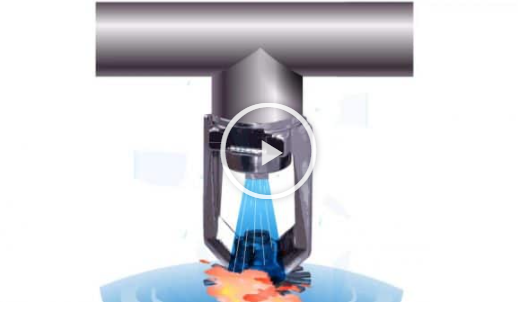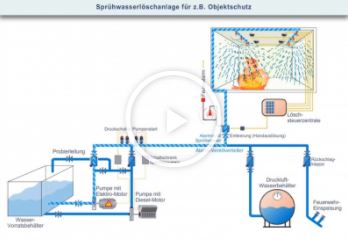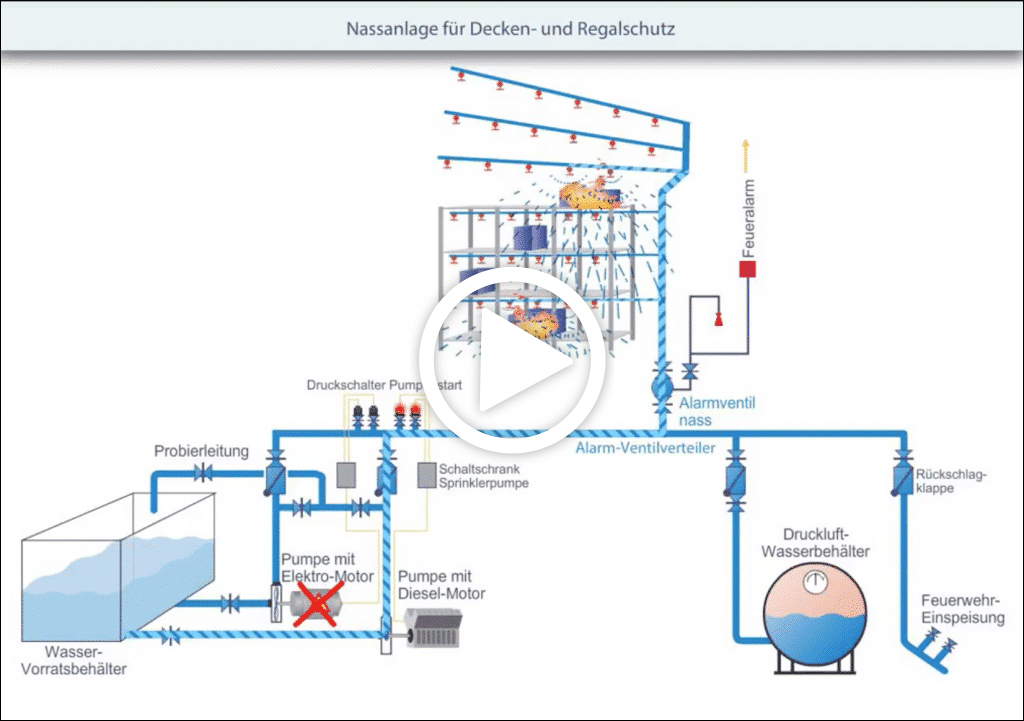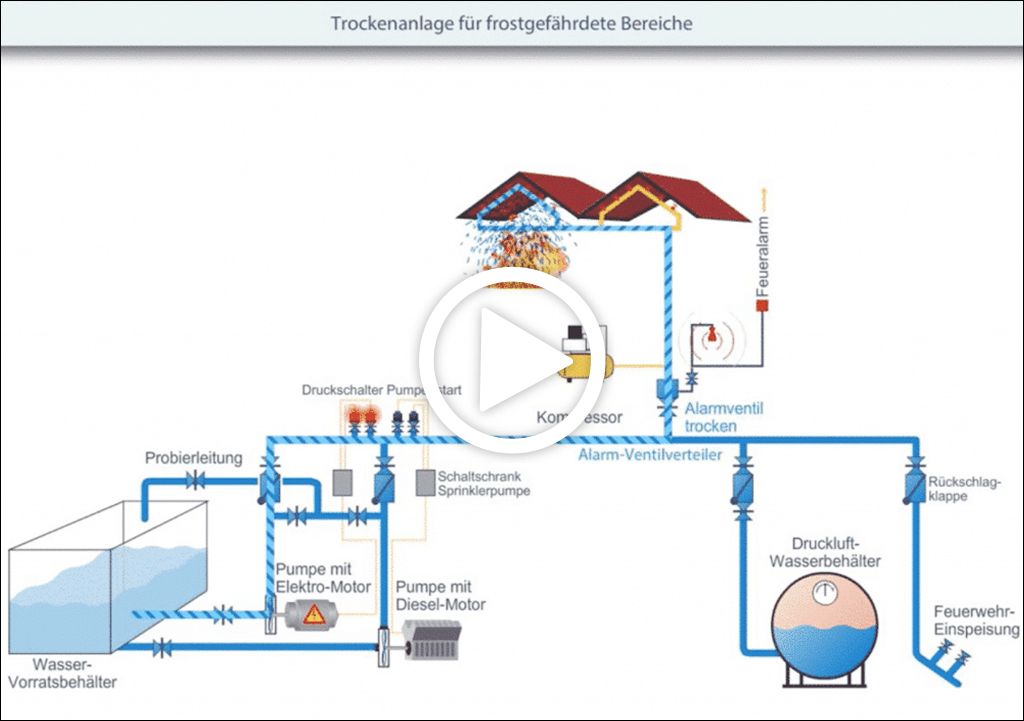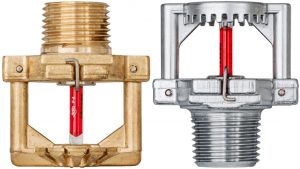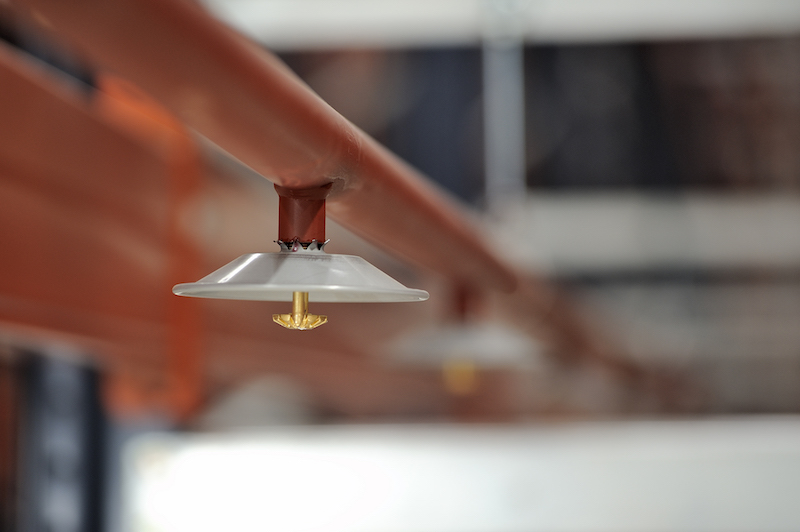
Sprinkler systems
How does a sprinkler work?
 The most important components of a sprinkler system are the network of distribution pipes and a dedicated, guaranteed water supply
The most important components of a sprinkler system are the network of distribution pipes and a dedicated, guaranteed water supply
The sprinklers are spaced according to the fire risk and are located in the branch pipes. In the event of a fire, only those sprinklers in the immediate vicinity of the fire are activated.
There are various types of sprinklers
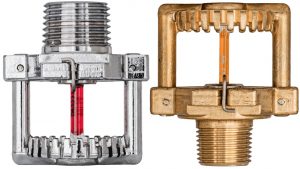
Standard sprinklers
These sprinklers can be installed suspended or standing. The spray plate is designed so that the areas both above and below the sprinkler are sprayed. This type of sprinkler is ideal for flammable ceilings.
Pendent and upright flat spray sprinklers

The most common type of sprinkler. Standing sprinklers are used when the pipework is visible. Suspended sprinklers are always used when the pipework is hidden.
Pendent flat spray sprinkler, with a flat spraying pattern. Application field: for suspended ceilings and intermediate, raised floors. On shelves – advantage: minimal clearance between top edge and spraying disk.
Upright flat spray sprinkler, with a flat spraying pattern. Application field: for suspended ceilings and intermediate, raised floors. On shelves – advantage: minimal clearance between top edge and spraying disk.
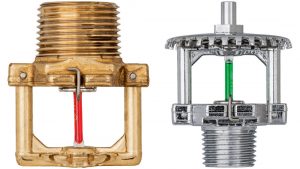
Pendent and upright ELO-spray sprinklers
ELO-spray sprinklers K160 dispersing the water with a downward parabolic spray pattern. This sprinkler has a K-factor of 160l per minute at 1 bar water pressure on the nozzle. Application field: wherever big design discharges are required (30mm/min) i.e. block storage, pallet storage, rack storage etc.
The pictured sprinkers are also available as Fast Response Sprinklers.
Pendent and upright spray sprinklers
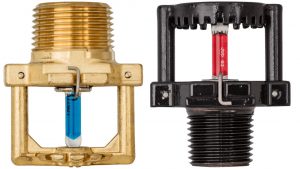
Pendent spray sprinkler, downward parabolic spray pattern. Application field: for all applications with no specific spray pattern requirements.
Upright spray sprinkler, downward parabolic spray pattern. Application field: for all applications with no specific spray pattern requirements.
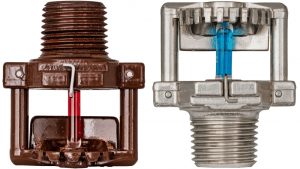
Side Wall Sprinklers
These sprinklers are mainly used for aesthetic reasons to keep ceilings free of pipes or prevent the damage that can be caused by installation on existing ceilings.
Fast Response Sprinkler
 A fire inevitably produces toxic gases that are more dangerous to humans than the actual flames. Fast-response sprinklers have an extremely short response time that enables a fire to be detected and fire-fighting to start quickly. This prevents high temperatures and the creation of dangerous pyrolysis products, thereby gaining valuable time to save lives.
A fire inevitably produces toxic gases that are more dangerous to humans than the actual flames. Fast-response sprinklers have an extremely short response time that enables a fire to be detected and fire-fighting to start quickly. This prevents high temperatures and the creation of dangerous pyrolysis products, thereby gaining valuable time to save lives.

Download Brochures
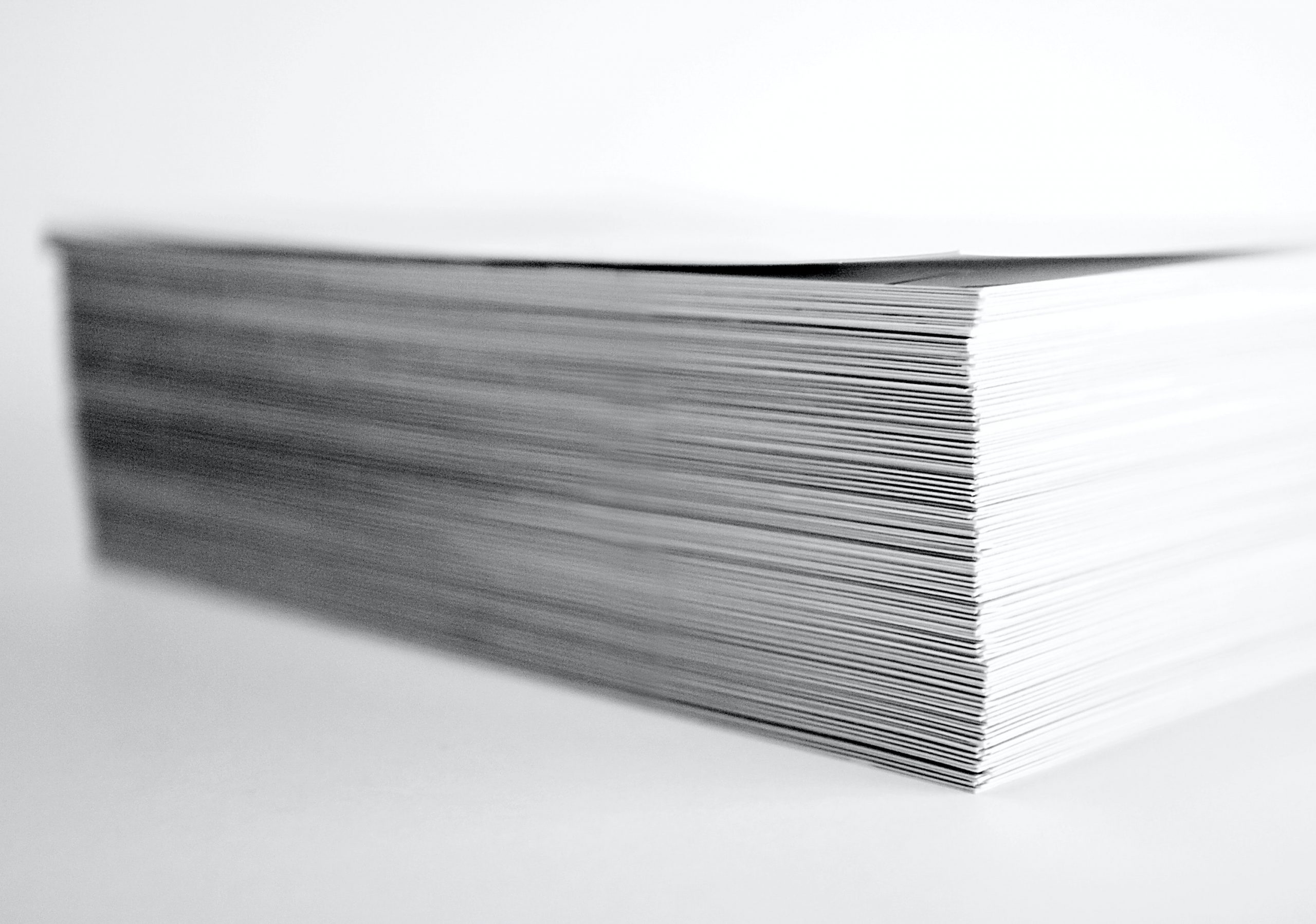
Download installer certificates
 Anne Stolz
Anne Stolz
Send email
Calanbau
Brandschutzanlagen GmbH
Marienburgstraße 35
64297 Darmstadt
T: +49 (0)69 5005-1579

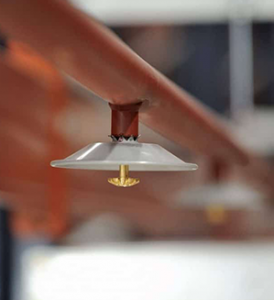 The most important components of a sprinkler system are the network of distribution pipes and a dedicated, guaranteed water supply
The most important components of a sprinkler system are the network of distribution pipes and a dedicated, guaranteed water supply 